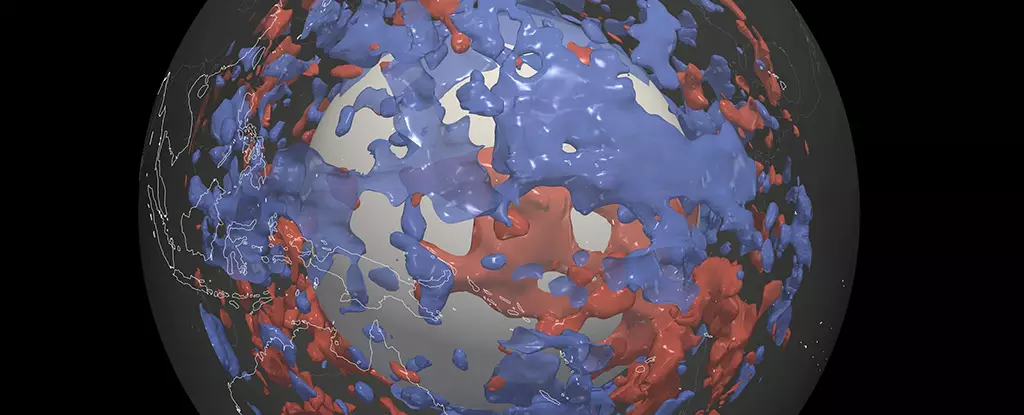Seismic wave analysis has emerged as a formidable tool in the quest to understand Earth’s internal structure. While scientists have long utilized this method to decode the planet’s subterranean composition, recent advancements mark a significant step forward in our geological comprehension. A notable collaboration between researchers at ETH Zurich and the California Institute of Technology has unveiled perplexing patterns of seismic activity that suggest the presence of detached tectonic material residing in unexpected locations within the lower mantle. This article delves into the implications of these findings, the methodology employed, and the broader impact on earth sciences.
Seismic waves, generated by events like earthquakes, act as vibrations traveling through Earth’s layers, much akin to sound waves traversing the air. They reveal valuable insights about sub-surface materials based on their travel speeds, directions, and interactions with various geological features. For decades, seismologists have relied on limited types of seismic waves and computational methods to create comprehensive images of Earth’s internal landscape. However, the recent deployment of the Piz Daint supercomputer by the ETH Zurich-Caltech team has changed the paradigm, allowing for the processing of a broader spectrum of seismic data than ever before.
This technological leap has empowered scientists to develop highly detailed maps showcasing the intricacies of the lower mantle. In doing so, they uncovered what appear to be dense, ancient fragments of tectonic plates scattered across the globe, even in regions devoid of known subduction zones. The team’s findings challenge long-held assumptions about plate tectonics and hint at a more complex interaction of the Earth’s geological processes.
The research revealed massive, plate-like blobs embedded within the lower mantle, far removed from conventional subduction zones where tectonic plates typically sink. The observed patterns raise several questions regarding the origins of these buried structures. Earth scientist Thomas Schouten posits that these unexpected remnants could be remnants of material assimilated into the mantle over geological time, potentially originating from various events apart from standard plate-subduction processes.
Interestingly, the newly identified formations include cooler, high-density regions that contrast with their surroundings, hinting at a complex geological past. The significance of this discovery is profound; it suggests that the Earth’s mantle may be more heterogeneous than previously understood, teeming with geological histories and phenomena yet to be fully explored.
While the seismic waves themselves provide a valuable perspective on mantle conditions, Schouten notes that the findings should not be viewed in isolation. The data must be contextualized through a nuanced understanding of the materials generating the wave signals. Different geological materials respond distinctly to seismic waves, leading to variations in wave speed that must be analyzed comprehensively.
To fully unravel the enigma of the discovered blobs, further research is essential. This involves parsing through the complex material properties that contribute to seismic velocity and understanding the geological processes that could have formed the observed structures. For instance, ancient, silica-rich formations might exist alongside iron-rich accumulations, painting a vivid narrative of the Earth’s formative years and its ongoing evolution over billions of years.
As scientists continue unraveling the intricacies of Earth’s mantle, the findings presented by the ETH Zurich and Caltech team underscore the need for a holistic approach in geological research. Each new piece of data contributes to a broader understanding of our planet’s history and the dynamic processes that shape it. The potential stories hidden within the mantle fragments beg for exploration and investigation, promising to enrich our understanding of Earth’s complex geology.
In the grand scheme of earth sciences, these discoveries not only expand our knowledge of tectonics but also serve as a reminder that beneath our feet lies a dynamic world—one that thrives on constant evolution and reformation. Our ongoing pursuit of understanding the Earth continues to reveal hidden wonders and mysteries, inviting scientists and enthusiasts alike to ponder the tales locked deep within the planet’s core.

